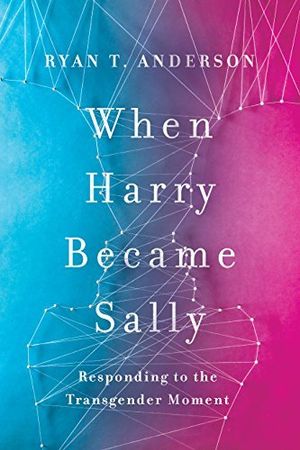The aim of the book is to sombrely discuss the transgender phenomenon from a medical and psychological perspective and to delve into public policy issues. In those aims, it succeeds admirably. The greatest caveat for a UK readership would be the US focus of the book in its references to culture and law. That said, much remains applicable for the wider Western world. The book is not for a specifically religious readership and is not an attempt to lay out the Bible’s teaching on gender. However, the author’s Roman Catholic convictions inform his writing.
The first chapters describe the current transgender moment. Anderson interacts with the writings of transgender activists and shows how a certain definition of gender is pushed by activists and accepted by government, the media, big business and the medical profession.
Anderson highlights education as a frontline here, with schoolchildren being encouraged to express their own gender identity on a spectrum, helped by the suitably androgynous gender unicorn. Religious liberty, parental authority and even issues of basic safety are being ignored. A powerful chapter is given to the voices of detransitioners – those who have undergone gender reassignment therapy but then regretted it later.
An important chapter sets out the biological basis for sex, arguing that the organisation of the body for reproduction is what makes us male and female. Gender is then simply a social manifestation of biology.
We then deal with the psychology of gender dysphoria, the (genuine) struggle that some individuals have with their bodies.
Anderson draws on expertise in the field to suggest that we ought to treat this in the same way as conditions like anorexia. Attempting to remake the body to conform with the wishes of the patient is neither wise nor helpful (nor, in the case of gender dysphoria, even possible). He zeroes in on children: little girls who want to be boys and vice versa. Most children will grow out of this, but in the current climate, it is not unusual for them to be given puberty blockers. The medical and psychological effects can be very damaging.
In the final chapters, Anderson analyses culture and moves on to matters of public policy. He describes the confusion regnant in US society—Facebook has over fifty options for gender. He also identifies the development of the transgender movement through social changes and the unanticipated effects on gender roles through industrialisation and second-wave feminism.
The final chapter on the laws surrounding matters of gender is perhaps the most US-focused in the book, with many issues stemming from an Obama administration decision to understand sex to be gender identity as defined by the individual.
Anderson concludes with encouragement. He sees the transgender moment as unsustainable. It is too far divorced from basic reality, but not about to fade away on its own. We are right to insist on truth and to move to protect the vulnerable who are being harmed by a ruthless ideology. I’m more inclined to think that sinful people will accept any amount of insanity rather than repent, but his plan of action seems sensible.
James Goodman
Stockport



